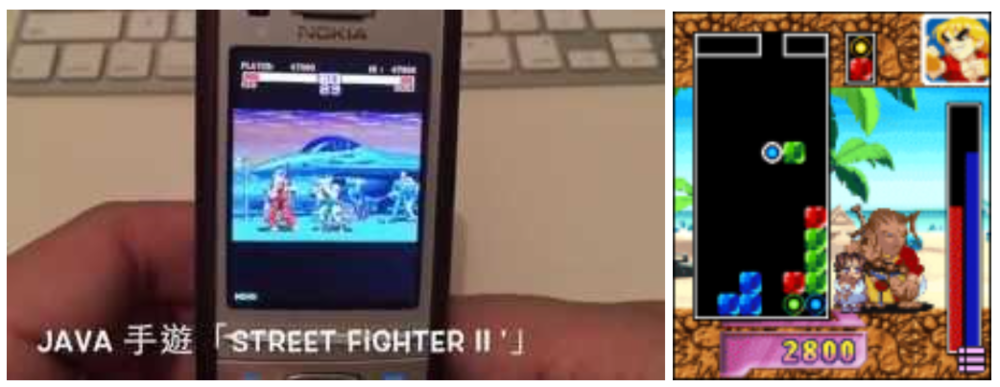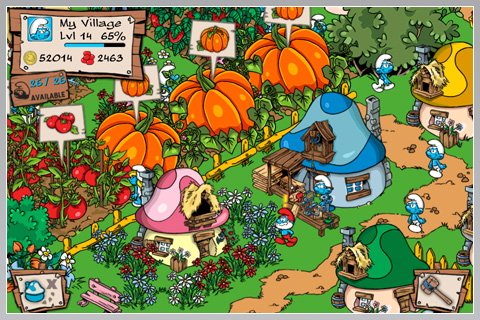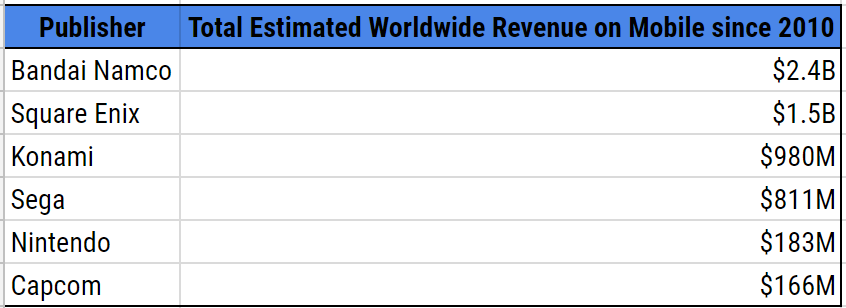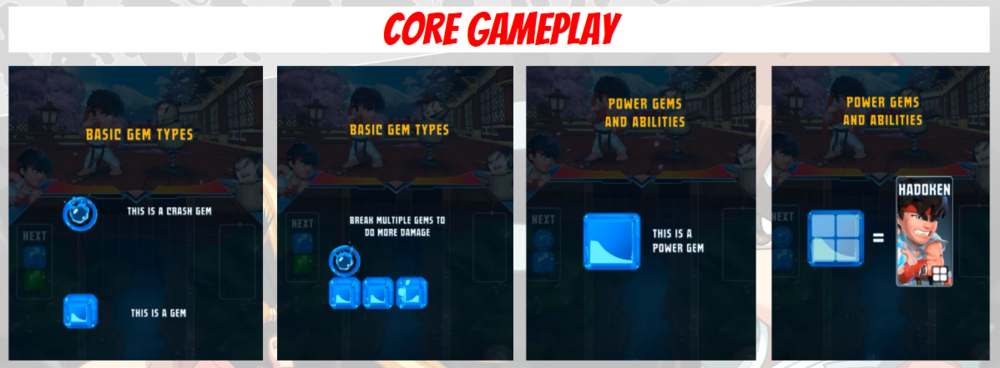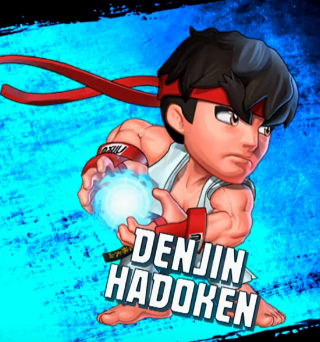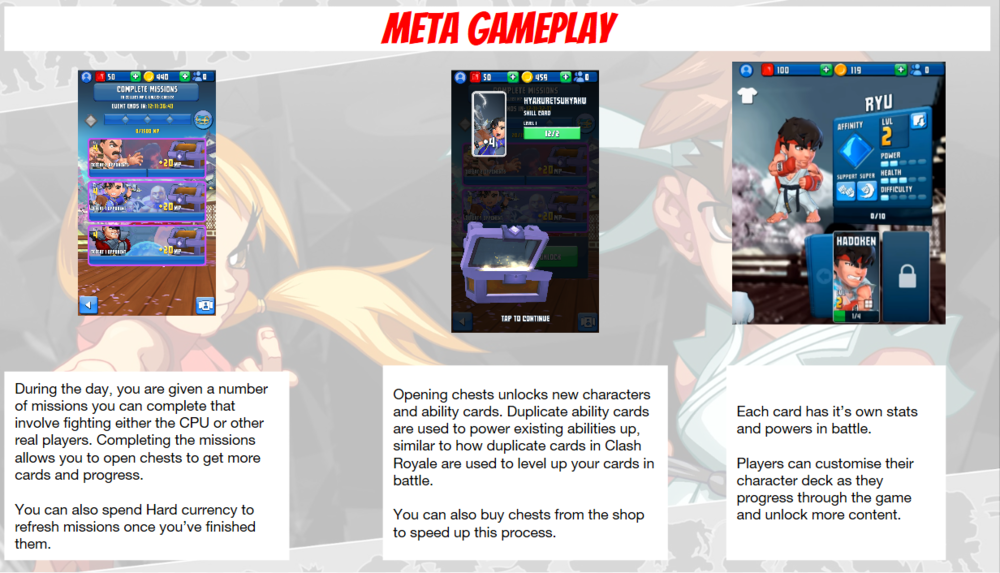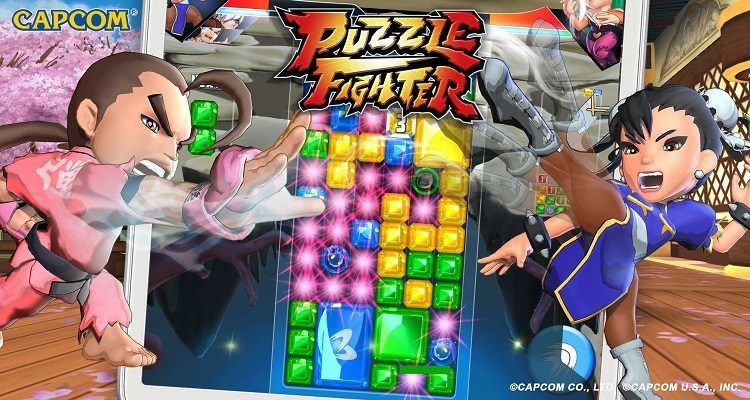
This deconstruction was originally posted on Deconstructor of Fun but has been re-posted here and updated with the latest numbers.
subscribe to Deconstructor of Fun weekly newsletter / Follow on Facebook
Capcom is one of the most renowned game developers in history. Founded in 1979 and located in Osaka, Japan, they were the pioneers of the fighting game genre with seminal 90’s smash hit Street Fighter 2 and creators of other huge IP’s such as Resident Evil (survival horror), Devil May Cry (stylish action) and Monster Hunter (Co-operative RPG). It’s a company that I used to work for and one that I have amazing memories and experiences from. Whilst they’ve never been considered a tier 1 developer in terms of revenues, they are in my opinion (or were) a tier 1 developer in terms of games and critical acclaim. Capcom also boasts a catalogue of some of the best games ever made across multiple different genres, over multiple different decades, and on multiple different platforms. A feat that is not easy to achieve.

^ Some of the titles Capcom have developed or published over the years include Monster Hunter, Dead Rising, Street Fighter, Megaman, Devil May Cry and Resident Evil.
What is probably less known to the public eye is that Capcom has a mobile games division. In fact they have had this division for an extremely long time, dating back to the i-mode days of NTT Docomo in Japan in the early 2000’s, creating Java games for feature phones in the East and J2ME (Java) compatible phones in the West. In the pre-app store days, Capcom was a reasonably successful company with titles such as Street Fighter 2, Who wants to be a Millionaire and “Are you Smarter than a 5th Grader” making decent revenues for the division.
^ One of Capcom’s games running on older handsets, including an earlier port of Super Puzzle Fighter. Yes, that is Street Fighter 2 running on a Nokia 6080!
What may surprise you even further is that the first ever free-to-play game on mobile that reached the top grossing position in the USA was also a Capcom game - The Smurfs Village released in 2010, before App Annie’s Intelligence services existed.
^ 2010’s Smurfs Village was the first Free to Play games on mobile to reach the top-grossing position in the USA. Such was this game’s impact that Apple had to change their IAP flow to create an option to ask people to put their password in for every purchase made.
In what must now be looked back on a case of “peaking too early” the company never managed to turn this position of strength into a long-lasting success with companies in years to follow such as King and Supercell showing them how it was done. Quite unfortunate and a missed opportunity is given that mobile games now make more money than any other gaming platform and that free-to-play as a business model is one of the key reasons for that. Certainly, the decision to go all-in on The Smurfs Village, a freemium game, on mobile, with an IP in an era where most big players thought that either super-cheap apps like Angry Birds or premium experiences like Infinity Blade would win the day is an excellent example of forward thinking.
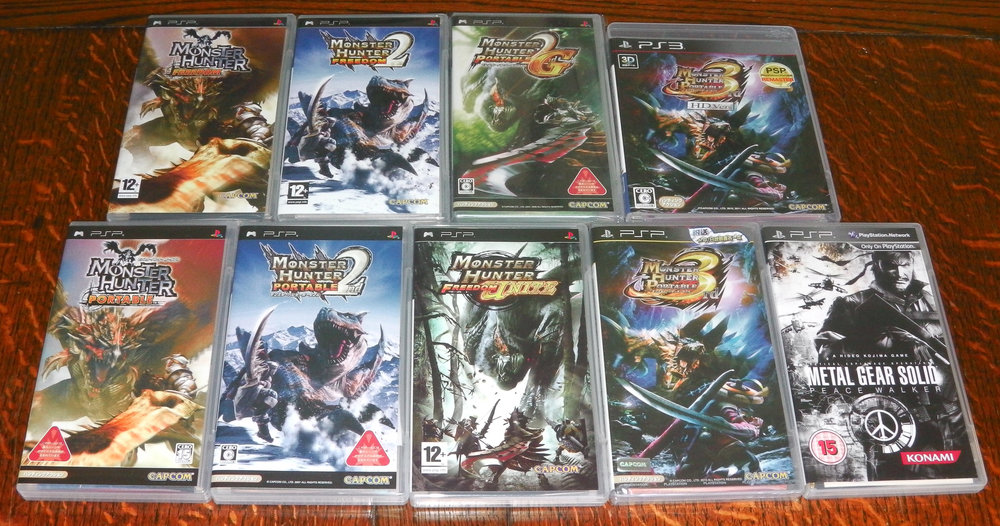
^ Some of Capcom’s Monster Hunter titles released for the Sony PSP.
Given the undeniable ability of Capcom as game developers and their impressive catalog of IPs, it’s surprising that they continue to struggle on mobile. Compared to other famous Japanese game developers, the revenues they generate from their titles are incredibly weak, even when including their home territory of Japan. This is a big surprise given that one of the most lucrative mobile games in Japan of all time is the Monster Hunter series on the Sony PSP which Capcom themselves own.
^ A comparison of estimated mobile revenues generated from traditional physical game companies in Japan.
This situation can be put into context by comparing their revenues with other traditional home console / arcade manufacturers in the Japanese markets. Capcom is dead last, and this is not taking into account some of the new upstarts in Japan such as GREE, DeNA and Gung-Ho. Quite simply, given the strengths of the Capcom IP and its back catalogue, it’s fair to say that they are massively underperforming on mobile, especially when more than 66% of their estimated total revenues was derived from their Smurfs Village game released 7 years ago and which is no longer operated by the company.
So it appears that 2017 is the time to start addressing those problems and Capcom has decided to have a fresh stab at mobile through their excellent Vancouver studio, most famous for developing the Dead Rising franchise. Their first mobile title is a reimagining of the 1990’s arcade classic Super Puzzle Fighter 2 Turbo - simply called Puzzle Fighter.
A Blast from the Past - Super Puzzle Fighter 2 Turbo

^ An intense puzzle fight starting your truly! The original Super Puzzle Fighter 2 Turbo is an incredibly fun and addictive game. Easy to pick up and play yet with a lot of depth and skill involved, it’s a perfect party game.
Super Puzzle Fighter 2 Turbo was released in the mid 90’s as a way to cheaply take advantage of the insane popularity of the Street Fighter franchise. It’s a block matching puzzle game with a unique twist - you play against another player and the trick is to match more blocks faster and more skillfully than your opponent. The game design is a work of genius as it’s incredibly simple to pick up with very few rules and yet has a large degree of mastery to it. Fights are very quick but insanely rewarding and fun. It’s a game that on paper should be a throw-away title but that in reality is a hidden gem among many other games released in the 1990’s. Even to this day, it’s core gameplay is timeless, addictive and fun, with some gaming communities still supporting it. The game was re-released by Capcom in 2007 through Backbone Entertainment as Super Puzzle Fighter 2 Turbo HD Remix. This version of the game contained improved high res graphics, fixes to the original game balance and 2 new modes to add more variety to the base gameplay. The team on this game did a great job, faithfully recreating the gameplay that makes the title so awesome.
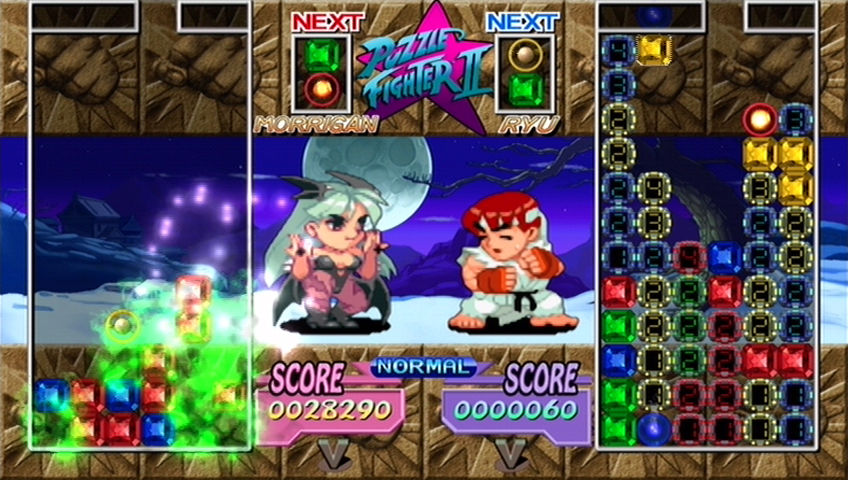
^ 2007’s Super Puzzle Fighter 2 Turbo: HD Remix updated graphics and added new modes. It was a digital release available on Xbox Live Arcade and the PlayStation Store.
So now fully 10 years on from that title, we are back again with a Puzzle Fighter title. This time the “Super” moniker has been dropped and the platform of choice is mobile, with the F2P business model. With incredible core gameplay, short sessions and depth of mastery on paper this could be an absolute smash hit. As a Capcom fan and a former employee, I was super excited to play it.
The Art Style
Before jumping into gameplay, I must comment on one of the most noticeable changes to this version of puzzle fighter - the decision to change to a 3D art style. I imagine the intention is to have broader appeal in western markets, however, I personally find the art horrendous, especially when compared to the incredible style that the original game had. The original Super Puzzle Fighter 2 Turbo had an awesome “chibi” or super-deformed look for all of the characters, making them look cute and giving each character real personality. The original art is in fact some of my favourite ever Capcom artwork as it simultaneously manages to appeal to both the veteran Capcom fanboy and those that have never played games with characters and animations that literally make you laugh out loud. The newer style looks OK in the app store screenshots but in-game it doesn’t really seem to fit. Capcom have used assets from modern games such as Street Fighter V to make their backgrounds and the new quasi-cute look with these backgrounds just comes off as two styles that don’t work together.
^ The older style of artwork used in previous versions of Puzzle Fighter was bright, vibrant and appealing.
The newer style also makes all of the characters look weird and they lose their original charm. I imagine that the style was selected to appeal to a broader audience with hopes of bringing more of the causal puzzle crowd who love King and Playrix puzzle games, but I think it’s been a huge failure and something that is criticized in many of the reviews for the game. When the hard work has already been done 20 years ago to make a great art style that was universally loved among its player base I find the new art style to be a contemptuous change, to say the least! Whilst art style is always going to be subjective at the best of times I do think this was a problem that the team behind the game has created for themselves. It’s a problem which did not need to exist.
To be fair to Capcom, the new game has a very good overall presentation. Opening Chests, activating a special move, browsing through the menus, etc is all very well handled and has a real feeling of quality, slickness and polish to it.
Gameplay

Puzzle Fighter is a block matching puzzle game, but with a twist - you are battling another player (or AI) at the same time as you are matching blocks, so is your opponent. Thus the game is called Puzzle Fighter and the game takes place in a Street Fighter stage with two characters and health bars. Every time you make a match, you do damage to your opponent and when they reach zero HP they are knocked out and you win.
Moment-to-moment gameplay consists of trying to match crash gems with regular gems. The gameplay is a bit like Tetris or Puyo Puyo in that you are incentivised to make matches of large amounts of gems clustered together called a Power Gem. This is the same gameplay as the arcade original from the 90’s. Where the game differs is that when you explode a Power Gem, it also triggers an ability card that your character possesses, which changes the amount of damage and / or causes an effect on the opponent. In the example above, matching 4 gems triggers the Hadoken ability if you have picked Ryu. These abilities make up the metagame / progression system of the title which can be collected and upgraded - more on that later.
Whilst matching gems, you drop counter gems onto the opponent which makes it harder for them to make their own matches. However, after a while, these counter gems turn into regular gems which the opponent can use to make a counter attack. Thus the game has a really nice excitement level and balance as you have to gauge whether you want to make a match and potentially give your opponent enough Gems to hurt you back, or if you want to take a risk and build up a large set of power games and chains on your side to finish them off with one devastating attack.
^ A new addition to Puzzle Fighter not present in Super Puzzle Fighter is that each character has access to a Super move like in regular 2D fighting games.
Finally performing matches and activating abilities charges up your super move. This move does a large amount of damage and often has some other effects like rendering your opponent unable to make a match for a limited time duration. This is a great nod to the famous Capcom fighting games such as the Street Fighter series and is something that was not present in the original arcade release of Super Puzzle Fighter. The only slight frustration is that the sequence takes a few seconds to play out which you must watch, which gets boring quickly when you’ve seen it a few times as you aren’t able to look at your gems and plan what you want to match next.
General Gameplay Notes
Playing the game feels like a lot of fun, with the controls working well on mobile despite the game originally being designed for an arcade stick or console d-pad. There do seem to be some technical issues in terms of finding real opponents to fight, which I hope is ironed out ahead of full launch. For the most part, the core experience of Puzzle Fighter in terms of making matches, chains and trying to second-guess your opponent is intact. The only downside is that the free-to-play mechanisms in the game have changed the importance of skill, which is a big letdown. More on that in a minute.
Core Loop
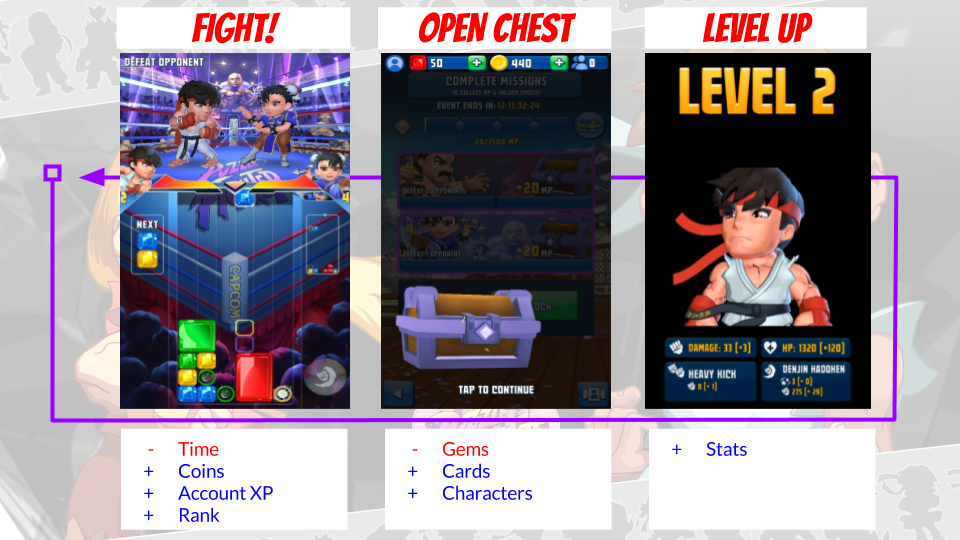
The core loop in Puzzle Fighter is pretty similar to understand. You fight matches against either the CPU or real players and unlock chests as a result. You open those chests to get new characters, new costumes and new ability cards to progress through the game. Chests unlock instantaneously instead of being put into a queue like Clash Royale, although impatience is added into the game via timers for missions. Once you have completed all of your daily missions, you have to wait for them to refresh before you can get more chests from them, or you can pay to speed up the timer or buy more chests to skip the step altogether.
I’d personally call this system inferior to Clash Royale simply because it misses out on the callback mechanism that Clash Royale introduced. In that game, having to come back in 3 hours to open a chest of rewards is a powerful motivator to bring you back into a game, whereas in Puzzle Fighter, when you come back into the game, you have to play to be able to claim more rewards again. That’s definitely not a bad design decision per se, but as players can’t always commit to gameplay every time they open a game, it’s not as powerful as a meta or progression system. As a result, Puzzle Fighter lacks a “30 second” gameplay session where you can dip in very quickly and achieve something meaningful. It’s not a huge criticism, but compared to the proven best in the market, is an unusual decision.
Monetization primarily comes from buying new chests to unlock more content. This is a traditional Gacha system that is now commonplace in the market and generally works well. Currently, the game only has 8 characters and limited moves and costumes so the desire to purchase is not that strong. How


